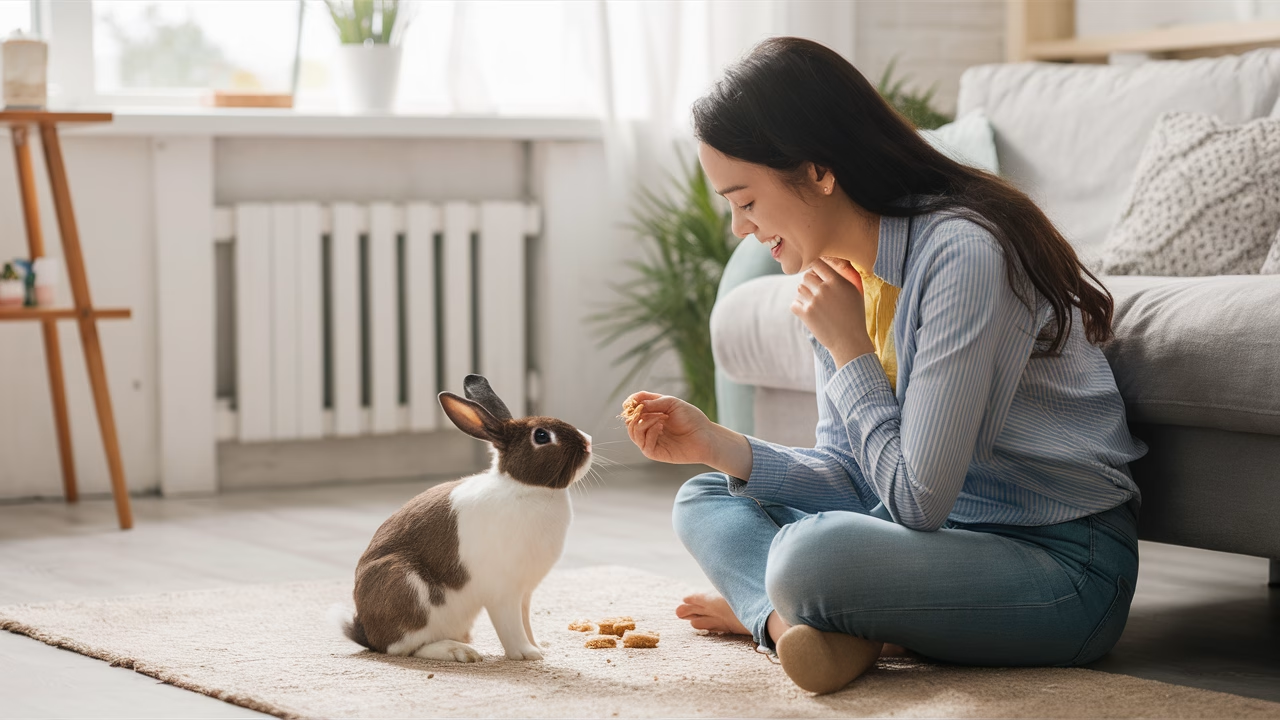How do I improve pet bonding in just 5 minutes a day?
By giving your undivided attention for just five minutes daily—through eye contact, body language, and simple routines—you can significantly enhance pet bonding with most pets, including dogs, cats, birds, rabbits, and even fish.
- Fast yet powerful: Just five minutes of focused attention daily builds trust and love through effective pet bonding techniques.
- Species-specific fun: Cats love slow blinks, dogs respond to facial expressions, and birds mimic gestures—all unique animal behaviors.
- Low-pressure routine: No need for expensive toys or long training sessions for strong pet bonding.
- Backed by behavior science: Simple interactions match how animals communicate naturally.
- Good for you too: Reduces stress and strengthens emotional connections with your pets.
Why 5 Minutes of Pet Bonding Matter More Than You Think
Ever feel guilty because life gets too busy for quality time with your pet? Don’t worry—we understand. The magic isn’t in how much time you spend, but how you spend it. Five golden minutes of undistracted presence speak louder than an hour of background coexistence. Think of these pet bonding moments as mini dates, not drawn-out meetings.
In practice, what your pet craves isn’t a grand performance but consistent connection. Over time, these daily pet bonding rituals scaffold deeper levels of trust. From sharing morning eye-gazes with your cat to exchanging silly faces with your dog, these micro-moments create powerful emotional bonds and often lead to funny pet moments.
Fun Ways to Bond with Your Pet at Home
Just like humans need different love languages, so do pets. Let’s explore quick, species-specific pet bonding methods that cater to their natural animal behaviors:
| Pet Type | 5-Minute Bonding Idea | Why It Works |
|---|---|---|
| Dogs | Make faces, use playful tones, mirror head tilts | They read facial expressions just like humans—perfect for pet bonding |
| Cats | Slow blink, gently talk, quiet together time | Mirrors feline communication of safety and trust |
| Birds | Whistle together, mimic head bobs | Birds mimic behavior to bond with companions |
| Rabbits | Quiet sitting time with treats | Creates safety and might trigger a “binky” jump |
| Fish | Feed at the same spot and speak calmly | They recognize voices and form routines |
| Reptiles | Supervised out-of-tank time with gentle handling | Some show excitement or calmness around favorite humans |
Across Species: Understanding Unique Animal Behaviors for Better Pet Bonding
Each animal sees the world through its own lens. Understanding these unique animal behaviors doesn’t require expertise—just awareness and empathy. Let’s break down specific pet bonding behaviors that feel like “language” to your pet:
- Dogs process your expression in the same brain region humans use for faces. Making silly eye contact and playing chase creates shared joy and strengthens pet bonding.
- Cats see you as a giant, lovable kitten. Their “slow blink” is the feline version of a hug—one of the most endearing animal behaviors. Send one back for instant pet bonding.
- Birds might offer you regurgitated seed (gross but genuine affection). Respond with whistles or rhythm-matching head bobs for effective pet bonding.
- Rabbits do “binkies” when happy—these jumping displays are some of the funniest pet moments you’ll witness. Stay patient; floor sitting and whisper-chats might earn you one.
- Fish anticipate your presence and show unique animal behaviors. Tap the glass gently, let your finger guide them, and narrate feeding time for surprising pet bonding results.
- Guinea pigs “popcorn” when thrilled—little jumping beans of joy that create hilarious funny pet moments. Just sit nearby and offer food to become their favorite.
- Bearded dragons and reptiles perk up at familiar voices, showing remarkable animal behaviors. Let them explore a blanket-covered floor under supervision for meaningful pet bonding.
How Parrotfish Poop Creates White Sand Beaches: The Secret Behind Tropical Paradise



